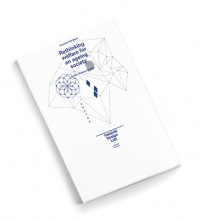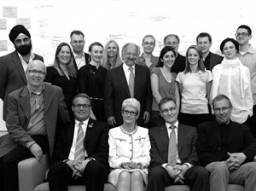
This is an excerpt from the HDL Challenge Briefing on Ageing
With one of Europe’s most rapidly ageing populations, Finland faces a daunting challenge in light of the imminent retirement of the Baby Boomer generation. The onset of sudden strains and intense pressures specific to Finland will draw increased attention to shortcomings of the existing welfare system.
However, the challenges put forward by this condition present Finland with a unique opportunity of unprecedented scale: Given its long history of fostering innovation and growth, Finland is in a perfect position to capitalize on the pressures created by this challenge and channel them towards the production of new areas of expertise and prospects for growth.
The imperative to act quickly and the impetus to respond fully to the challenge ahead will inevitably create substantial momentum toward changing how Finland provides for the welfare of its citizens. If this momentum can generate more than a simple solution to the immediate problem, the opportunity to restructure the welfare system will generate new benefits for Finnish society as well as constitute valuable strategies that can be used by other nations with similar ageing populations.
Finnish society, and its elderly population in particular, are key assets in this challenge. As a nation that values strong family bonds, one important element for enhanced social approaches to care is already in place. A powerful cultural work ethic also offers the opportunity to shift labour out of a binary notion of career and retirement to a “downshift” model of phased transition. This stepped phasing would ease the overall impact of Finland’s dependency ratio in a culture whose tendency for consensus-based action often results in a reluctance to act until the establishment of a proven path.
Because the social contract underlying the Finnish welfare system (a contract common to other Nordic welfare states) ties generations around service providing structures, the overall health of the Finnish welfare state is heavily contingent upon the balance between its productive and dependent members of society.
The social contract will be tested as the dependency ratio rapidly increases, doubling within the next thirty years. The magnitude of coming pressure threatens to render traditional operations ineffective; practices such as targeting tax raises on the actively working populations is financially impossible, while lowering the scope of welfare services is socially unpalatable, and increasing immigration, improving efficiency, and other quick fixes seem unlikely.
If Finland hopes to successfully counter these pressures while exploiting the opportunities presented by this challenge, it must first find a way to hedge risk with competitive growth. Finland must embrace a strategy for capitalizing on the opportunities presented by its ageing population in a manner that is more social than institutional in nature; it must invest in the renewal and redefinition of the social contract between generations.
In order to create value potential, Finland must rethink how and why it delivers welfare services to the elderly, as well as redefine a general understanding of the term “elderly.” This will necessitate innovation in the broadest understandings of the role of the elderly within society. It will require evaluation and adaption of how the elderly population is integrated into all aspects of their surroundings such as, their position in the overall social fabric, the character of their consumer presence, their location within the built environment, and the means of their political participation.
Finnish society must find a way to embrace the notion of a healthy, productive, independent, and connected old age for its citizens as a means to change the very way that ageing is understood. Improvements to the elder care system must involve the full participation of all levels of society so as to provide a more robust societal support network. The elderly must be reintegrated into the rest of society in such a way as to preserve their dignity without adding additional strains on the welfare system.
Source: HDL Challenge Briefing on Ageing 1.0

